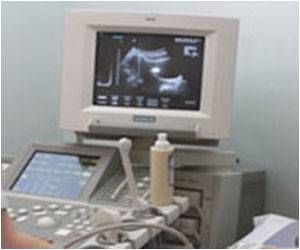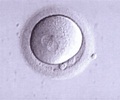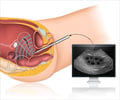Ultrasound provides a less expensive and radiation-free alternative to detecting and monitoring cancer compared to technologies such as X-rays, CT scans and MRIs.

But researchers at the UNC School of Medicine have overcome this limitation by combining ultrasound with a contrast agent composed of tiny bubbles that pair with an antibody that many cancer cells produce at higher levels than do normal cells.
By binding to the protein SFRP2, the microbubble contrast agent greatly improves the resolution and tumor-detecting ability of scans produced by ultrasound. In a paper published in PLOS ONE, UNC Lineberger Comprehensive Cancer Center members Nancy Klauber-Demore, MD, professor of surgery and Paul Dayton, PhD, professor of biomedical engineering, were able to visualize lesions created by angiosarcoma, a malignant cancer that develops on the walls of blood vessels.
"The SFRP2-moleculary targeted contrast agent showed specific visualization of the tumor vasculature," said Klauber-DeMore. "In contrast, there was no visualization of normal blood vessels. This suggests that the contrast agent may help distinguish malignant from benign masses found on imaging."
Klauber-DeMore's lab was the first to discover that angiosarcoma cells produce an excess of SFRP2. Building on that discovery, her team focused on how to use the protein to better monitor the progress of the cancer within blood vessels. Using a mouse model, the researchers delivered the microbubble contrast agent via intravenous injection and tracked it using ultrasound.
Since SFRP2 is expressed in many cancers – including breast, colon, pancreas, ovarian, and kidney tumors – the technique could potentially be useful on a broad range of cancer types. Klauber-DeMore said her team now wants to determine how well the technique works with these other tumor types, as well as studying its effect on breast cancer.
Advertisement
Since ultrasound is less expensive than commonly used imaging methods, such as magnetic resonance imaging (MRI), the new technique could help lower costs to patients who need cancer treatment. Also, because ultrasound is more portable than other imaging devices, it may be useful in providing treatment in rural and low-resource areas across North Carolina and throughout the country.
Advertisement















